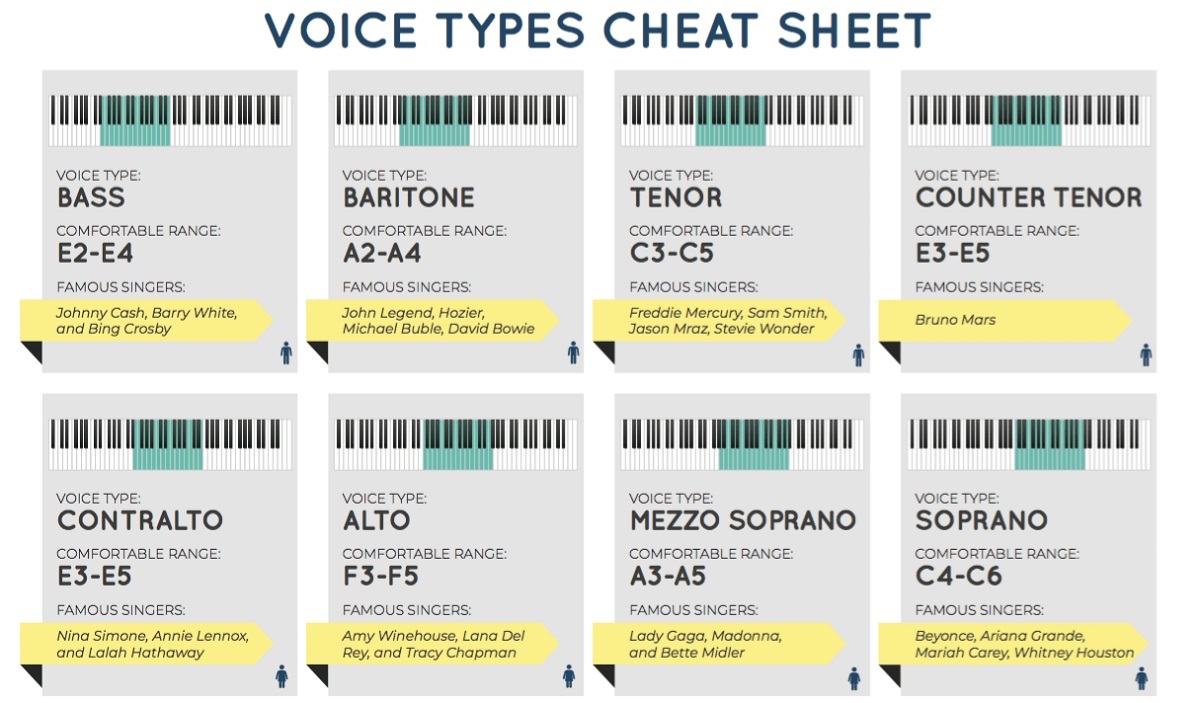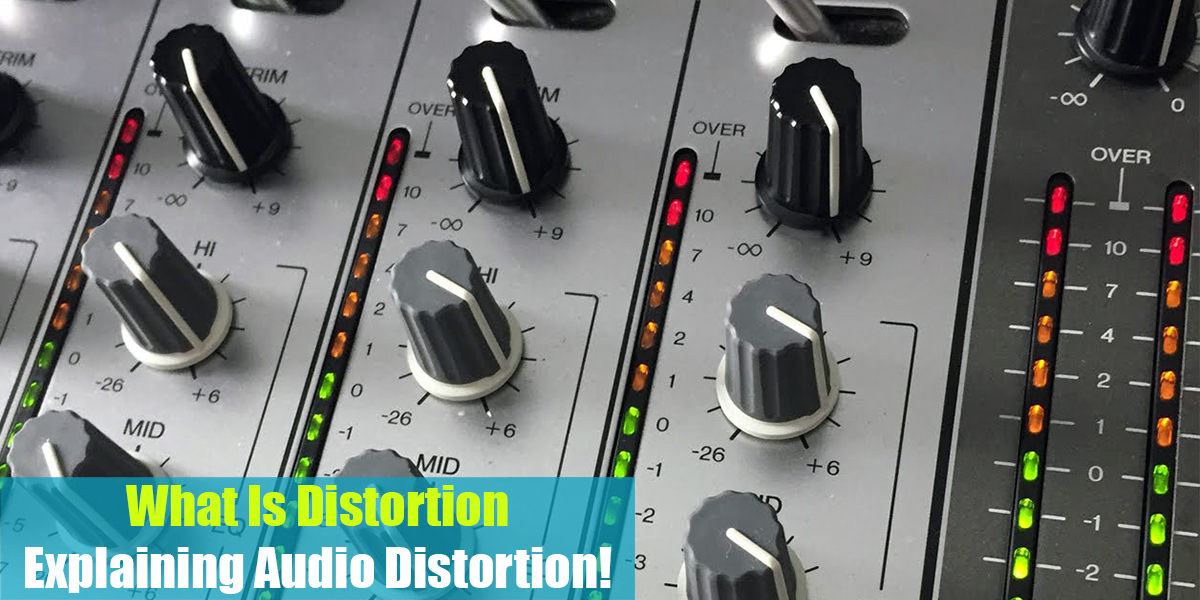Types Of Vocal Timbre
Introduction
In terms of voice types, it might seem as though vocal range determines everything. It is only a small part of what defines a person’s vocal category that they can actually sing. The concept of timbre, or tone quality, is one of the most important determining factors.
The concept of music timbre is distinct from the concept of a musical note: a note is a place at which a single sound falls on a scale, while timbre is the color or texture of a sound.
A singer’s voice is one of the most important factors we consider during a musical performance. The magical voice of a musician attracts us more at this moment. People are most likely to hear someone who maintains a good pitch and intensity.
As a result, the timbre of a voice (vocal timbre) describes the quality of a musical sound. Therefore, if there are two or more melodious sounds with the exact same note or frequency, the tuneful one is a timbre.
Explaining Timbre
It is common to describe a singer’s vocal timbre in bright and rich tones or in dark tones. It is also possible to describe the distinguished timbre of a person’s tone in terms of its piercing, silky, mellow, warm, light, airy, or breathy quality.
While it’s hard to pinpoint someone’s voice timbre since it’s hard to describe color or tone, it’s easy to explain when people are able to describe it and have a good ear for music. The flat, dark timbre and sharp vocal timbres refer to the pitch accuracy of a note, not the tone color, so you cannot have flat or sharp vocals.
The problem arises when low singers, for example, can have rich voices but also go flat often. The notes go flat not because their tone is thick in a sense, but rather because their tone is thin in a sense.
In addition to musicians, rappers also use vocal timbre when they perform their music. Rappers are also categorized by descriptors factors affect timbre, such as silky, mellow, piercing, or bright since timbre is about the color of their voice instead of pitch.
There are some beats that singers will sound better on due to the unique timbre of their voices. It may not be a good match for an artist with a bright timbre to perform over a silky smooth beat, for instance.

Types of Vocal Categories
Voice timbre, musical range, tessitura (the range of notes the voice feels most comfortable on), and flexibility (how fast the voice moves from note to note) are all used to determine a vocal category. In Western music, vocal categories include:
Soprano: Usually, women are sopranos, but young boys can also be sopranos – their airy tone is great for choir music. In addition, soprano singers and some men underwent physical operations and rigorous training during the 17th and 18th centuries so that they could strengthen the uppermost parts of their voices and sing sopranos.
Mezzo-Soprano: In contrast to the majority of mezzos, some countertenors train their vocal cords to approximate the sound of a female mezzo, as did their predecessors during the 17th and 18th centuries. It is usually only during Baroque opera performances that countertenors are heard today.
Contralto: In terms of female voice types, contraltos are perhaps the rarest and possess a tone so dark that they often rival that of men. A contralto is similar to a bass clarinet, while a mezzo is similar to a clarinet.
There is a distinct feature of this category that is the lower register, and contraltos know best how to make use of their low “chest” tones. In spite of this, contraltos can reach pretty high notes with lightning speed in opera–coloratura contraltos can often reach high notes pretty far up into the vocal stratosphere.
Tenor: The tenor’s voice is different from a young boy’s because he is still developing his voice, although he sings some high notes. A tenor voice is full, energetic, and full of character, according to vocal experts.
Baritone: A category occupied by male voices ranging from tenor to bass, this category encompasses a variety of vocal timbres. The distinction between this voice type and its counterpart in the 19th century was interesting, since composers realized, that using vocal variety and contrast in music was much more exciting than dividing parts between high and low vocals.
Bass: Its name speaks for itself. A rare but essential part of music-making, these men form the bottom of the musical staff. The bass sings low notes, while the soprano sings high notes. Basses are special not only because of the depth of their notes but also because of their power and volume.

Vocal Timbre: What Affects It?
There are various ways to do this, but the most common is to practice and learn how to do it. We suppose that’s the case with most things. Changing the tone of the vocal tract by opening and closing different areas will cause the tone to change. In other words, you need to use your tongue and your throat to do that.
Standing can also affect your diaphragm by extending or reducing it. If you’re sitting slouched over, don’t even consider working on this. Having control over your breathing patterns is essential.
You can begin working on adopting a different timbre in music, once you understand your vocal type. It is natural for our voices to have a certain tone. However, that is just the beginning, not the end. The timbre is affected by several factors, so if you want to take it to a higher level, you need to take a closer look at them.
The importance of correct breathing patterns will quickly become apparent to you. In order to breathe properly, you must have enough air in your lungs. Even though it may sound silly, your diaphragm needs air to function. Taking proper breaths is crucial and practicing it is essential.
You might want to listen to some great singers. The way they create sound with their breath. Can you hear a nasal tone in their voice? What made them do that? To understand how they achieve their sounds, try to understand what they are doing. Spend some time listening to the same singer.
Check out their different styles of singing. What difference does it make to the voice? Identify the methods they use to achieve that. The first step to changing your voice is to understand “how a voice can change”. However, there may be something else you need to know in this case.
Timbre Training
It is true that the quality of your voice is largely determined by your innate characteristics. However, there are steps you can take to improve the sound of your voice, including:
- Get warmed up before you start. It is important to warm up your vocal cords regularly to prevent straining your voice. Find out what exercises your favorite singer uses to warm up her voice.
- Try out different ranges. By practicing popular music, such as classical music and jazz, you can try out different songs and singing styles. Trying out different styles and techniques will help you discover what you like and what you don’t like. Find out how to use both your chest voice and your falsetto to produce a good singing tone, as well as how to distinguish between them.
- Get a vocal coach to help you. Your high notes can be sounded higher or your low notes can be sounded lower with the help of an outside expert. In addition to improving breath control, a voice teacher can also help you build endurance and strength.

Balance and Training
There is a lot of work and focus involved in changing timbre. Learning how to create a new sound with your voice involves balancing all the variables that contribute to your tone quality describe timbre, including breath support, control, stability, flexibility, and strength.
It is necessary to maintain strong physical and mental capacities, as well as be aware and in tune with yourself. Keeping your voice in shape and working on obtaining your new tone will require you to do vocal exercises frequently, almost every day.
In the end, taking voice lessons and getting guidance from a voice coach is the best way to begin your journey; it will give you the opportunity to explore your voice, give you the tools you need to work on and give you the ability to achieve those new and different qualities that reflect your personality, depth, emotion, and characteristics.
Developing the right techniques to train your voice will help you change the timbre of your voice by understanding and learning about the factors that influence it.
Timbre Assessment
You can change your vocal type to fit a different timbre if you understand your vocal type. Your voice has a natural tone, but if you want to change it, you need to consider these factors: breathy sound or forced air, strength, vowel sounds, headspace, vibrato, etc. Using those factors, you can enhance your voice type’s richness or darken, lighten, or go higher or lower.
Discover timbre by listening to some different voices and recognizing what they do to achieve their sounds – do they blow a lot of air, do they have more space behind the note, or do they sound nasal? In order to achieve a particular timbre with your own voice, you must understand how a voice creates its sound.

Conclusion
Even a newbie engineer can recognize different timbres of different instruments and know if a human voice has a good tone colour, and sound quality and if actually is a good singing voice. Same as with musical instruments, the vocal is an instrument of its own type.
Once you get a basic understanding of the timbre examples and timbre of various musical instruments, you will be able to get the right mix to the song you have at hand.
In case you are having any questions in regard to the topic of timbre, please let us know in the comment section below and we can together elaborate more on it.







